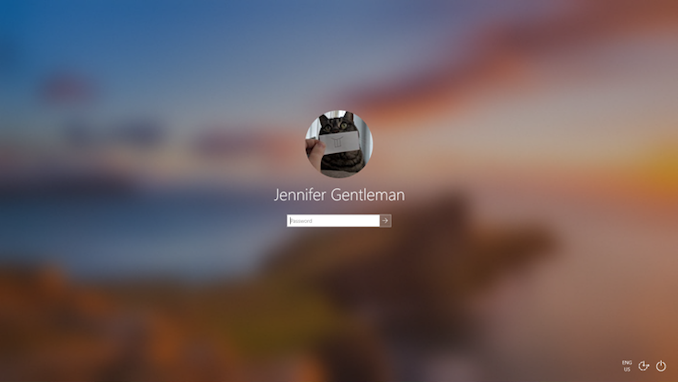
This week, Microsoft officially rolled out the Windows 10 May 2019 Update to the world. However, due to some recurring issues over the last couple of updates, the company is thankfully taking a very measured approach this time. An approach which will hopefully mitigate some of the update issues that always seem to arise when a major system update comes to software that runs under an almost infinite number of configurations.
With the May 2019 update comes new features, alongside with the usual updates to Windows 10’s look and feel. Today we’ll be going through some of the more important updates in more detail. Windows 10 is now almost four years old though, so the days of feature updates packing in a large number of new ideas are mostly behind us. With Microsoft still committing to updating Windows 10 twice per calendar year, likely everyone would be happy to see these updates be a bit smaller, a bit quicker to install, and a bit less jarring on the other end. Luckily, Windows 10 May 2019 Update seems to fit the bill nicely. The update is quick, and the big changes are going to be mostly cosmetic for most people, although there are a couple of great additions with this rollout as well.
Officially the update is the May 2019 Update, which is as unambiguous as you can get, and hats off to Microsoft for continuing down the road of having to name their updates like they did with the Anniversary Update, the Creators Update, or the Fall Creators Update. May 2019 Update is a perfect name. Internally, this build continues down Microsoft’s path of a build number of the year and month, so the May 2019 Update is Windows 10 1903, meaning the build would have been more or less locked down by March, with only bug fixes after that. This naming scheme of course has the downside that they are going to run out of digits when the year 2100 rolls around, but I suppose they’ll cross that bridge when they get there.
Likely the biggest headline feature for this update is a refreshed look and feel, Microsoft is now offering a new Light theme, which compliments well with the already included dark theme. Although it may seem minor, keeping Windows looking fresh and modern is important, so it’s nice to see that attention is still being paid here. In addition, there’s some new iconography to go along with the new theme.
Once of the most interesting features for this update is Windows Sandbox, which is a Windows OS in a container for testing and running applications. This feature is not available on Windows 10 Home, so developers that think this might be useful will have to ensure they have at least Windows 10 Pro.
| Windows 10 Version History | ||
| Version | Version Number | Release Date |
| Windows 10 Original Release | 1507 | July 29, 2015 |
| November Update | 1511 | November 10, 2015 |
| Anniversary Update | 1607 | August 2, 2016 |
| Creators Update | 1703 | April 5, 2017 |
| Fall Creators Update | 1709 | October 17, 2017 |
| April 2018 Update | 1803 | April 30, 2018 |
| October 2018 Update | 1809 | October 2, 2018 |
| May 2019 Update | 1903 | May 21, 2019 |
Microsoft is also walking back on a few things they’ve done which were done with good intentions, but not executed well enough to not cause pain with users. Cortana is no longer tied to the Windows 10 search. Updates can now be paused for up to seven days even for Windows 10 Home users, and more default applications can be uninstalled.
Let’s dig in.
Windows 10 has offered both a light and dark theme for some time now. But with version 1903, the light theme gets a major overhaul. In previous versions the default task bar and start menu color was black, but you could choose between light and dark for applications and most recently, File Explorer, which gained a dark mode in the October 2018 update.
The new light theme is a true light theme, affecting not only the app backgrounds but also the taskbar and start menu. The color choices are clean and refreshing, and it really look great. It also includes a new background, based on the original blue Windows 10 background, but lightened up to match the new theme.
Text on the taskbar switches from white text on black to black text on white, and to avoid being lost on the task bar, some of the white icons such as mail and Store are color reversed to make sure they are still easily found. The File Explorer icon also got a makeover since it was too light for the light theme. Microsoft has subtly changed the color scheme to work better in either light or dark modes.
The Start Menu has probably never looked cleaner than it does in 1903, where the new color scheme really works well. Microsoft is also changing the default start menu for new accounts to a more simplified version, with just a single column of applications rather than the two it was by default previously. You can of course still customize this any way you’d like, with groups of apps, and different tile sizes, but the out of box experience is a nicer look to start with. In addition, some of the icons have been updated to fit in better with Fluent design, which is Microsoft’s design language for Windows.
The Start Menu now also supports unpinning of groups of icons from the Start Menu, so if you don’t like the default, or just want to start over, it’s easy to remove everything. In addition, Microsoft is allowing more of the default applications. The following applications can all be uninstalled via the Start Menu:
- 3D Viewer (previously called Mixed Reality Viewer)
- Calculator
- Calendar
- Groove Music
- Movies & TV
- Paint 3D
- Snip & Sketch
- Sticky Notes
- Voice Recorder
- Microsoft Solitaire Collection
- My Office
- OneNote
- Print 3D
- Skype
- Tips
- Weather
You’ll no longer need to brush off your PowerShell skills to remove some of these default applications.
In addition, the Start Menu is being isolated into its own process. In past builds, Start was hosted as part of the larger ShellExperienceHost.exe, but now it gets its own StartMenuExperience.exe. Anyone who has had the Start Menu stop responding will appreciate the effort here, since one of the main goals of breaking it into its own process is reliability and debugging.
Windows 10 has always included a search bar by default on the Windows 10 taskbar, but that search bar was tied into its Cortana virtual assistant. With Windows 10 May 2019 Update, Search and Cortana have officially split up, each getting their own location on the taskbar. You can of course customize that as well, and remove one or both if you’d like.
The new search has a landing page which quickly shows you recent files and top applications, so you can even use it as a condensed version of the Start Menu. Search has become an integral part of Windows since Windows Vista, when Microsoft started indexing applications and files for quick access by clicking Start and typing Notepad, as an example. The new Search offers more of that previous experience, while still offering web search for terms.
Cortana is still around, and is being integrated into Microsoft To-Do with this update. It seems like a more logical fit for it to be in a separate app than the default search, and it’s doubtful most desktop users will be upset by this change.
Search is also getting some a new settings page where you can see the current indexing status, as well as set up what folders you want to index, what folders you’d like to include, and more. This is part of Microsoft still trying to move the myriad of settings away from the older control panel style into the modern Windows 10 settings, where they work better with multiple input types. You can still access the old indexer options here as well, if you need to change something that you can’t do in the modern settings yet.
Passwords are evil, and passwords have been proven again and again to not be a great way to secure things, so it’s great to see Microsoft offering a way to sign-in to Windows with a password-less account starting with the May 2019 update.
If you already have a Microsoft account, you can go to https://account.microsoft.com/account and sign in and then add your phone number to your account. If you don’t have a Microsoft account, you can create a new one based on your phone number.
Once your phone number is added, you can select your phone number when logging in and you’ll get a one-time SMS code on your phone which will let you log into the machine. Once logged in, you can set up Windows Hello with a PIN or PIN and facial recognition, and you’ll never need to enter a password to log in.
The Sign-In screen has also gotten some Fluent Design added to it, with an acrylic effect added when going to log in to focus your attention on the login box itself. It looks great.
Windows at its core is a legacy operating system trying to live in a modern world, and at times it shows its age. One area where Windows can quickly show its foundations is when running older applications on modern hardware with a high-resolution display. For a refresher, check out our article on why this is a problem, and how the company was trying to address it.
Windows 10 has made some major strides with High DPI, and many applications have been updated to support Windows per-monitor DPI awareness, but the legacy of Windows, and the lack of a requirement to code for DPI awareness even on a new application, means that many applications will never play nicely. To help combat this, Microsoft introduced a new scaling mechanism that would recognize if applications were not rendering correctly, and step in to address the scaling. It doesn’t work for every application, but the success has been good enough that with Windows 10 1903, this option is now on by default. This feature was first added with the Windows 10 Creators Update in 2017, so clearly there’s enough data now that they feel comfortable enabling this by default. If you’d like a refresher on the enhanced DPI scaling, we looked at it when it first launched.
My personal experience with the enhanced scaling is that it does work well, and this seems like a smart change to address applications that will likely never become DPI aware on their own. In 2019, when high-resolution is no longer a rare feature, this is really something that has become necessary. It should also reduce the number of times you see the pop-up letting you know its intervened, which, while useful, was likely something a lot of users didn’t really understand.
In addition, Task Manager now offers a new column you can select in the Details tab which will show you the DPI awareness of every running process, letting you know if they don’t support DPI scaling, or if they only support System level, per-monitor, or the latest per-monitor v2 specs.
One of the more exciting feature additions to Windows 10 May 2019 Update is Windows Sandbox, which is a containerized version of Windows which runs in a lightweight virtualized environment, and allows you to open a pristine version of Windows every single time. There are many scenarios where this would be useful, and by default the VM is isolated, allowing less than trustworthy applications to be run without having to fire up a new virtual machine to do it. It would also be great for application testing, and many IT functions would benefit from a quick and easy to use VM without having to deal with the complexities and heft of Hyper-V. The VMs are also disposable, so every time you turn open Windows Sandbox you’ll get a new, pristine VM.
Windows Sandbox is an optional component which has to be turned on through the “Turn Windows Features on or off” menu, and it is only available in Windows 10 Pro and Enterprise, so unfortunately home users are out of luck.
There’s actually a lot under the hood that makes Windows Sandbox special. When you think about running a virtualized instance of another operating system, it generally requires hardware dedicated to the machine, such as RAM, and a large footprint for the virtual hard disk, either dedicated up-front as a single large block on your storage, or one that is dynamically increased as the storage is consumed within the virtual machine.
Windows Sandbox doesn’t work like this, although unsurprisingly it is based on Hyper-V. Windows Sandbox leverages technologies used in Windows Containers, meaning it is designed to use the minimal amount of hardware it can.
Windows Sandbox gets a 40 GB virtual hard disk to play in, but Microsoft uses a dynamically generated image for Windows Sandbox that reduces its footprint on the host OS to just 25 MB when compressed, or 100 MB when Windows Sandbox is enabled. Rather than have a unique VHD file that it launches from, Windows Sandbox uses the copy of Windows 10 on the host machine as its base image. It uses clean copies of files that can change, so if you modify some of your Windows files on the host PC the Sandbox version won’t be affected, and the same thing happens in reverse. If Windows files are changed in the Sandbox machine, they don’t write to the original files, but instead to a new copy of the file. Then, when the Sandbox is closed, all of those changed files are discarded, so the next time it is opened it’s a clean version again.
Memory is another key component, but like with the disk, since both the host and guest are running the same operating system, there is plenty of overlap in memory as well, meaning the impacted memory on the host can be dramatically reduced. Since much of the in-memory data will be the same for the same processes, Windows Sandbox can direct map the guest VM to the host VM’s copy of the data to reduce how much memory is required. If one or the other tries to change that same location in memory, a new copy of the new data will be created for whichever one made the request, so the other is not affected. These are typical ways to save memory in a virtualized environment, but when the host and guest are running the same version of an operating system, the RAM savings are dramatic. Running Windows Sandbox with no applications open offers the Sandbox VM 4 GB of memory, but on my test machine it only consumed 237 MB of memory on the host. In addition, the host gets priority if memory is required, so it can reclaim memory from the guest if needed.
That same principle applies to the kernel scheduler. Unlike a full hypervisor, Windows Sandbox uses what Microsoft calls an integrated scheduler to decide when the Sandbox VM gets compute time. If high-priority tasks need to be run on the host, it can pre-empt the Sandbox and jump it in the CPU queue. The major benefit here is that the host remains responsive at all times, even if the Sandbox is using a lot of CPU.
If you’ve used virtualization in the past, you’ll know of the term snapshot, which allows you to save the state of a virtual machine exactly how it is, including the memory state. This is what Sandbox uses to launch. The VM can be loaded as an already booted and logged in version of Windows 10, cutting down on the start-up time required when launching Sandbox. On my machine, launching a new instance of Sandbox takes about ten seconds, and once it’s loaded it’s ready to go, since it’s already logged in to the desktop.
The Sandbox also gets access to some of the other hardware on the host, such as the GPU, which allows for hardware accelerated rendering, and it also is aware of the host battery state, so if you are running this on a laptop, the VM can cut its power usage when on battery just like a normal version of Windows.
You will also be able to customize the Sandbox experience with Config files soon, allowing you to launch the Sandbox with a specific configuration. Sandbox uses XML configuration files with the .wsb extension, and allow you to control whether or not the Sandbox gets access to the virtualized GPU, networking, shared folders with the host computer, and a startup script so you can have it automatically launch an application or run a script.
Windows Sandbox, in my eyes, is one of the most exciting features to come to Windows in a while, and is something that I will likely use quite often. Having an always pristine version of Windows to do application testing on, while being able to easily control its access to files and folders on the host, is going to be valuable for many, I think. The implementation is very well thought out, and leans heavily on the serious work done on Windows Containers for cloud computing. It’s great to see a feature that was targeted at Azure trickling down into consumer-level Windows 10. The small footprint it takes up means that even if you rarely use Windows Sandbox, having it enabled is almost zero cost, with it only consuming about 100 MB of space for its VHD.
Game Bar Updates
If you use the Game Bar in Windows 10 for capturing your gaming sessions, the Game Bar now features a gallery to view your clips and screenshots without having to leave the game. It’s a small but welcome touch.
Print Menu Updates
Printers are the bane of modern computing, but Windows 10 has improved the default printing experience with a better layout and better descriptions of the various options. The print experience also now has light-theme support to go along with the overall theming updates.
Windows Security App
The Windows Security app gets a bit of attention as well, offering a new Protection History page where you can check up on what actions it has taken. The history even shows events detected by the offline scanning tool, which is very convenient. There’s also a new Tamper Protection setting which prevents applications changing Windows Defender Antivirus settings.
Clipboard History
The new cloud clipboard introduced in Windows 10 October 2018 update is a fantastic feature, and combined with the snip and sketch options it is a winning combination that makes it difficult to use a previous version of Windows 10, if you’ve come to appreciate the new tools. The clipboard history can be accessed with Windows + V, and for 1903 it’s been redesigned to a more compact view so it doesn’t hog as much screen real estate.
As before, it works well, but I would still like the ability to keep the clipboard history open as a separate app, and although it’s more compact now, it limits what you can see if you’ve screen captured images, so if it was a standalone app, it could be resized as well. One of these days I’ll file that feedback with Microsoft.
Task Manager
A small but welcome change is you can now set the Task Manager to default to any of the available tabs. If you use the task manager often, as I do, this is a welcome change.
Sorted Downloads Folder
If you are like me, the Downloads folder is a dumping ground of many things, which can make it difficult to find what you are looking for after saving files there. With 1903, the Download folder will now sort based on the date the file was downloaded. This, of course, can be changed, but will be the default going forward, and this is one of those little changes that are incredibly helpful. When you have hundreds of files in Downloads, and save a file with some random name, it can be difficult to easily find it, but sorted by date with nice clear delineation makes the task infinitely easier.
Console Updates
The console gets some more improvements as well, including the ability to disable scroll forward, and the ability to choose the default cursor, and cursor color. The console has also added improved parsing and handling of ANSI/VT sequences, and how it renders colors. Microsoft has really improved the console dramatically in the last several versions, and the company makes no bones about leveraging ideas that work well in Linux in their own console, as well as making the console more Linux friendly.
Notepad
Notepad got updated. Yes. Your eyes are not deceiving you. Notepad didn’t play well with Linux files, and with Microsoft putting so much support into their Windows Subsystem for Linux, that could not stand. Notepad will now save files by default in UTF-8 without a Byte Order Mark, and Notepad will also display the encoding of a document in its status bar so you’ll know instantly what kind of file you are working in. But wait! There’s more! Notepad will also place an * in the title screen if it is working in a file that hasn’t yet been saved, so you will know at a glance whether the file has been written back to the disk or not.
At Build this year, Microsoft announced a new version of the Windows Subsystem for Linux, which will run a true Linux kernel. This will improve performance dramatically in certain scenarios, and increase the compatibility as well. The original WSL translated Linux system calls into Windows system calls, which causes a performance hit that the new version won’t need to do, since it’ll have a Linux VM running instead. The original WSL will still be available, since there are scenarios where WSL v2 may cause interoperability issues, such as if you want to run virtualization applications like VirtualBox, because WSL v2 will be using a Hyper-V backend. But the team is working on fixes and WSL v2 should be available to test in insider preview builds starting in June. If you missed our original announcement, check it out here.
Microsoft has also been making a lot of changes to the console to improve its usability, but they are running into limits where changes may break backwards compatibility. As such, they will be launching a new Windows Terminal application which will allow you to run multiple console sessions in a tabbed interface. It looks amazing if you use a lot of command line in Windows.
Probably the most important update coming is that Microsoft is replacing their web browser experience with one based on the Chromium project. It’ll still be called Edge, but the company has clearly decided it no longer makes sense to develop their own rendering engine when developers won’t test against it, so by going the Chromium route they’ll have a much better compatibility. The web was supposed to be the new open world, but in practice it has never been that way. The dominant browser of any time period is the one that web developers target against. For years that was Internet Explorer. On mobile, it was Safari for a period as well, but now the leading browser is Google Chrome. It’s a decision that makes sense for Microsoft, even if it’s a sad day for the web to lose a major rendering engine. If you want to give it a try, you can run it side-by-side with normal Edge, or any other browser. You can download it here.
Microsoft’s Your Phone app is also getting an update soon to provide more functionality with Android devices, including screen sharing, and notification support. I’ve had mixed results with Your Phone since it debuted, with periods of time where it just would not sync with my phone no matter what I did, but recent updates have seemed to help. It’s still pretty slow and clunky, but I’m hopeful for improvements since it should be a genuinely useful app.
When Windows 10 first launched, the subsequent updates were pretty substantial in terms of new features, since the operating system was new and need a lot of polish, but over the last year or so, the amount of substance in each update has been much more manageable. That continues with the May 2019 Update. There’s some great new features, and some polish, but overall, it’s a minor step, as it should be at this point in the lifecycle of Windows 10.
Arguably the biggest feature that most people will see is the new Light Theme. Theming is something that is personal, so either you’ll like it or you won’t, but I think it looks clean and refreshing. I especially like the new default wallpaper, which takes the original Windows 10 wallpaper and gives it a new lease on life. The small changes to iconography help as well, and the Fluent Design continues to permeate through Windows 10, adding subtle touches here and there, such as the log-in screen.
Windows Sandbox is also a great addition to Windows 10, although it does require at least Windows 10 Pro to get this option. Having a lightweight containerized version of Windows for testing and development will be very useful for a wide range of industries, and if you are looking ahead, you could easily see Windows Sandbox becoming a way to keep legacy access for certain programs. The small 100 MB footprint on the system makes it no burden at all, even if it is rarely used, unlike if you have a 100 GB VHD file sitting on your drive.
Windows 10 continues adding new features for developers, and 1903 is no exception. There are even more updates to the console, and even Notepad got an update to accommodate Linux file support. There is clear buy-in by the Windows developers to leverage Linux tools where appropriate, and their work has paid dividends for developers who use Windows. The upcoming Windows Subsystem for Linux v2 will offer even more compatibility and performance, and Windows Terminal looks amazing.
If you’d like a full change-log of everything that’s in 1903, Microsoft keeps a running total on docs.microsoft.com
What will be the most key though is Microsoft having a smooth rollout of this version of Windows. The last couple of updates haven’t gone so well, so they need to get a win here. Time will tell, but the 1903 update went very quickly for me on several machines so far, but obviously my sample size is insignificant compared to the number of machines running Windows 10, which is now over 800 million computers. It feels like Microsoft is going to be very measured with the rollout this time, which should help them catch any major bugs before they impact a large number of people.
It’s also good to see Microsoft giving some control back to users on how updates get pushed out. Windows 10 Home now supports up to seven days of delay for an update. It would be nice to see this bumped up to perhaps a month, but something is better than the nothing that was offered before.
Windows 10 May 2019 Update offers a refreshed look, some nice new features, and less of the bloat of some previous updates. Assuming the rollout goes smoothly, it feels like a nice update to Windows 10.
https://www.anandtech.com/show/14388/windows-10-may-2019-update-feature-focus-light-themes-and-sandboxes
2019-05-24 12:26:38Z
52780302048616
Bagikan Berita Ini

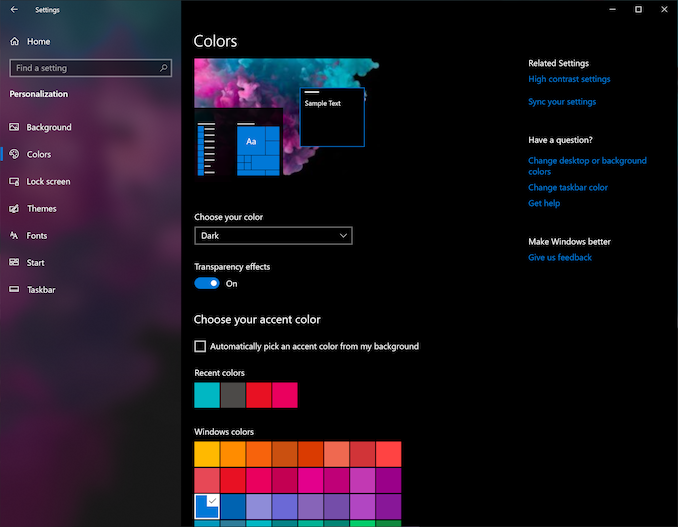
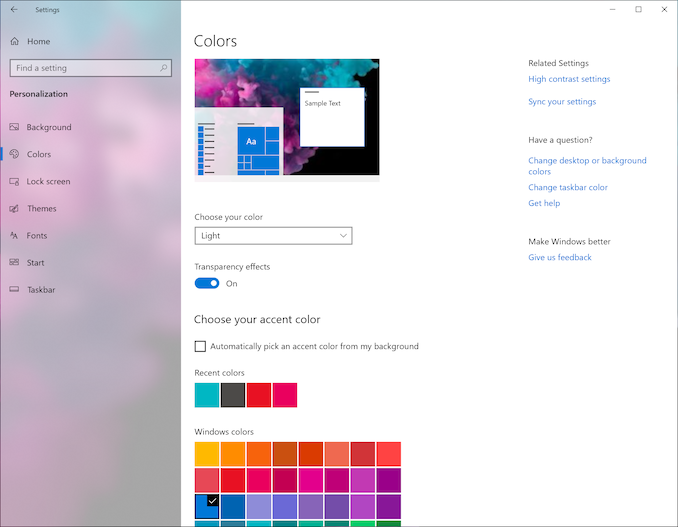
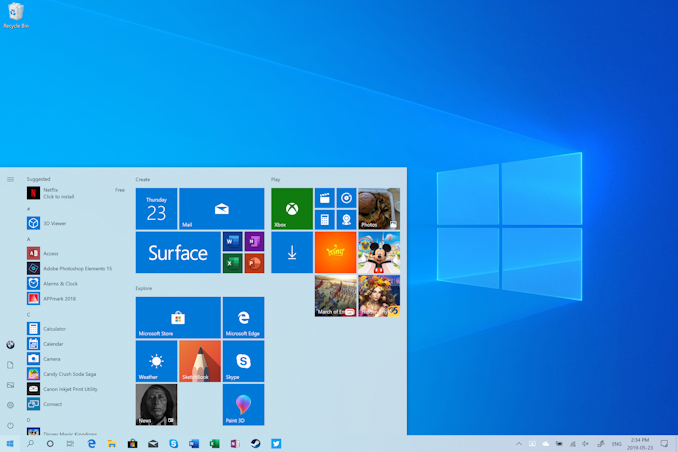
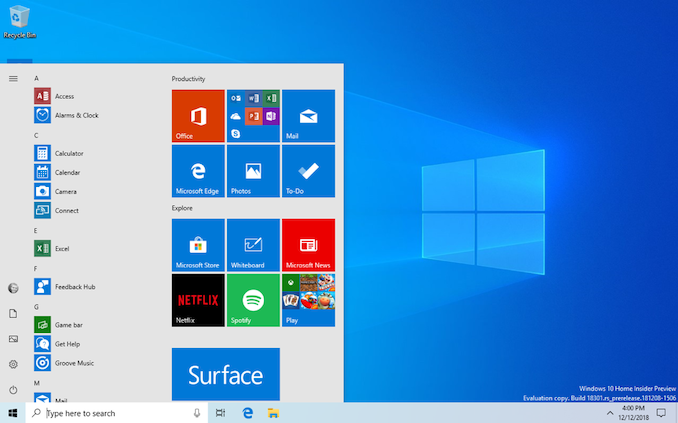

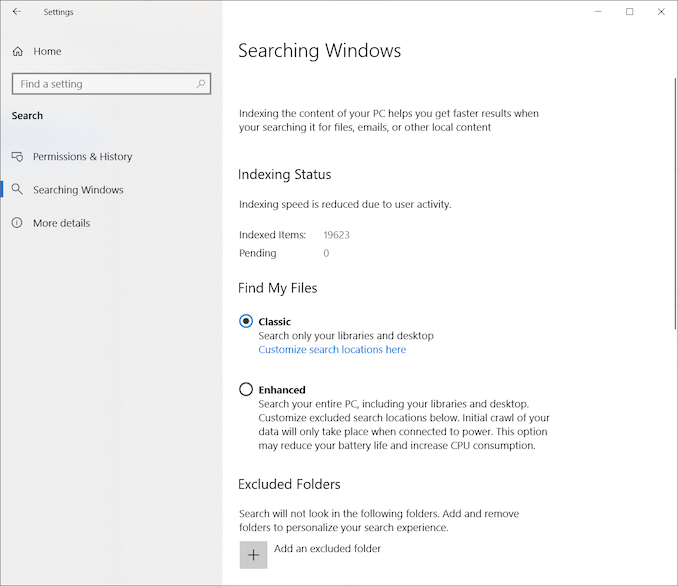
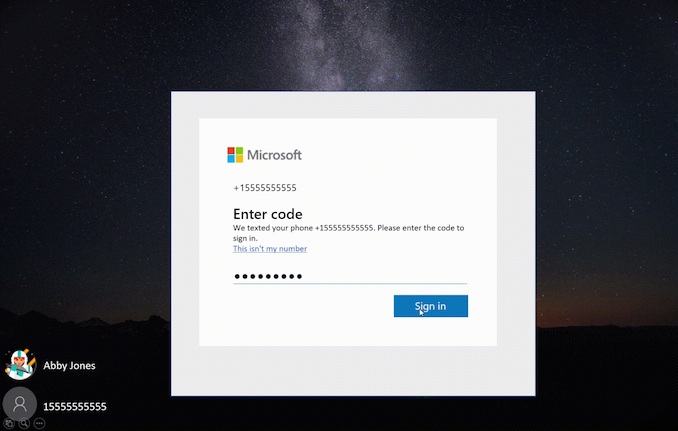
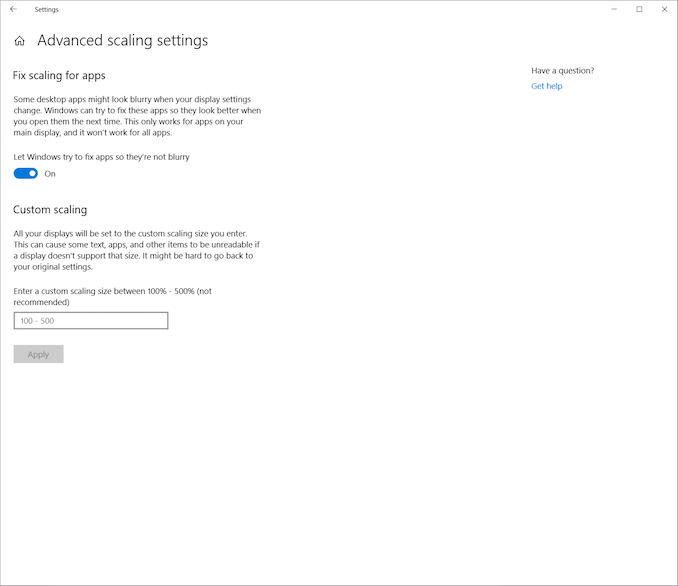
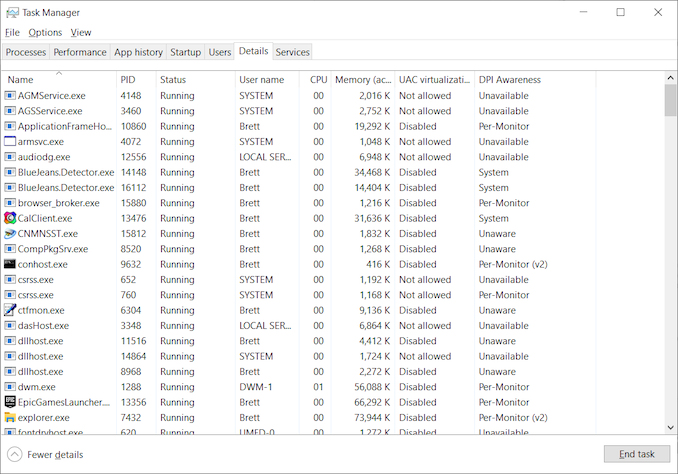
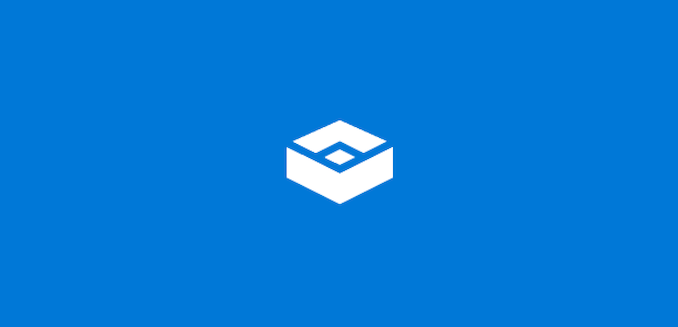
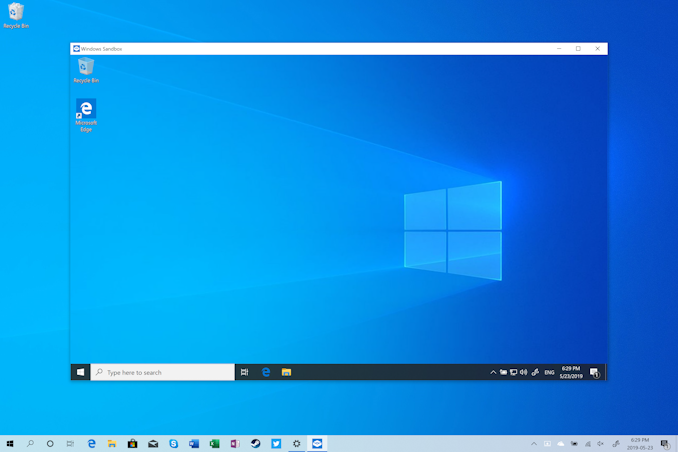


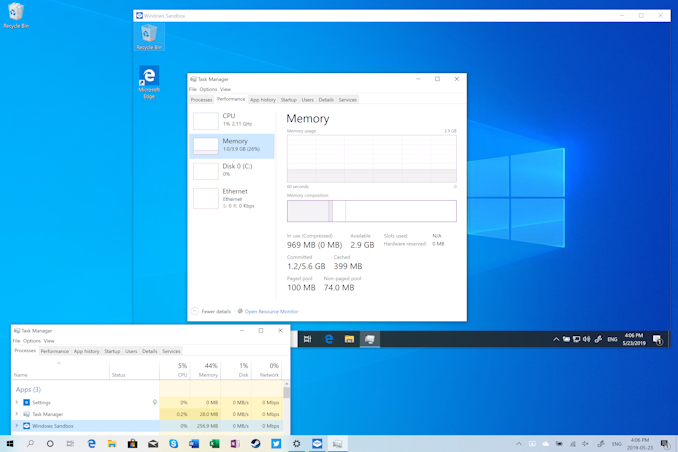
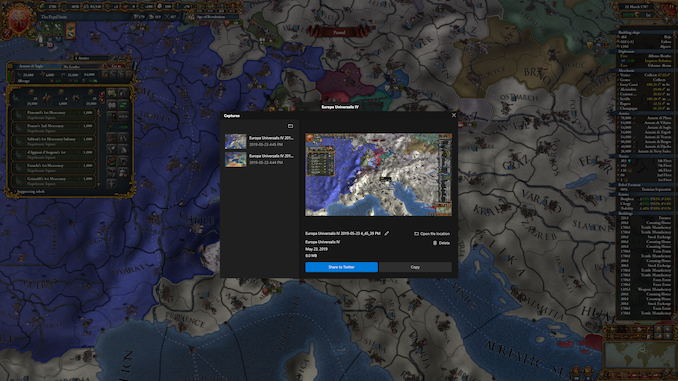
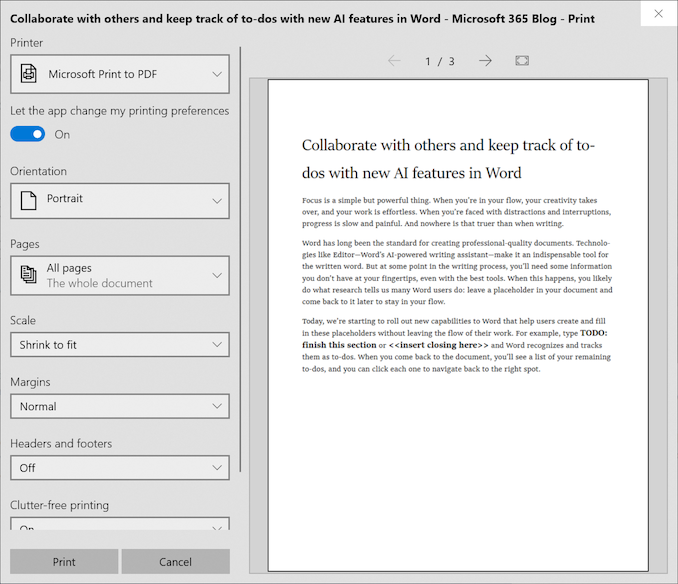
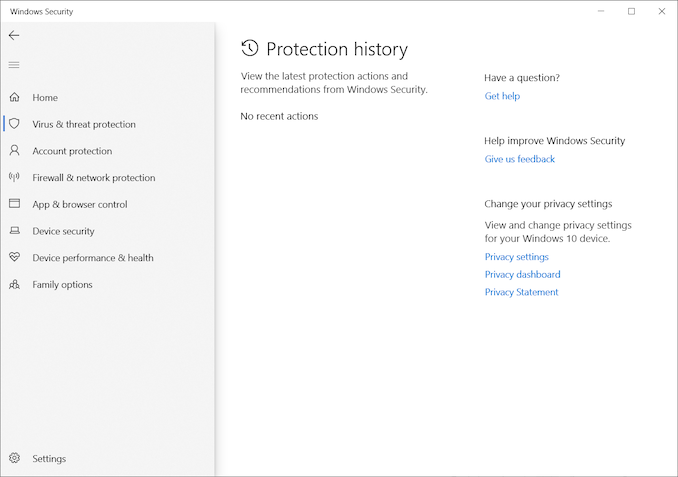

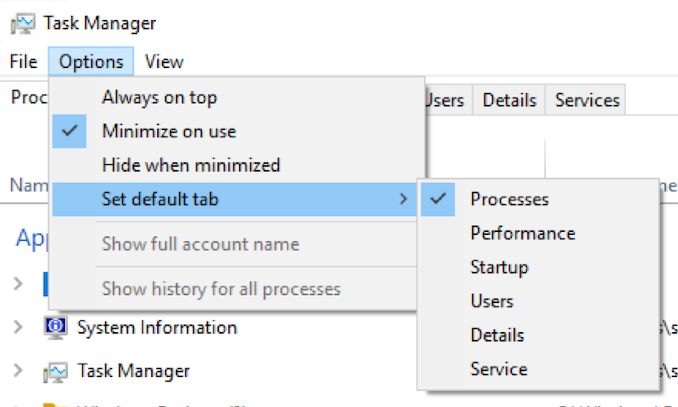
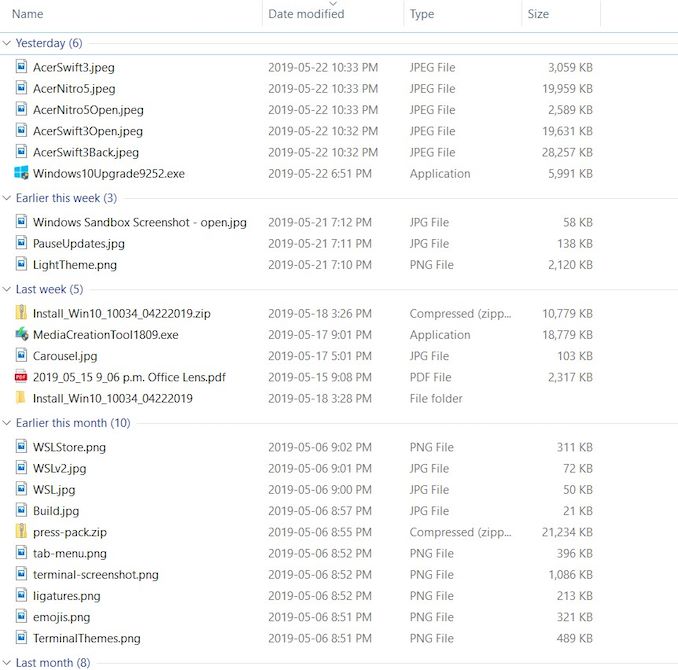
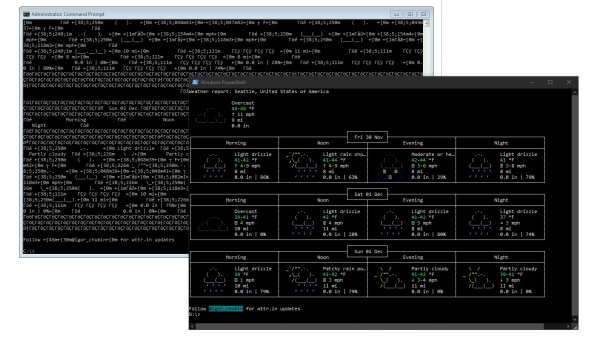
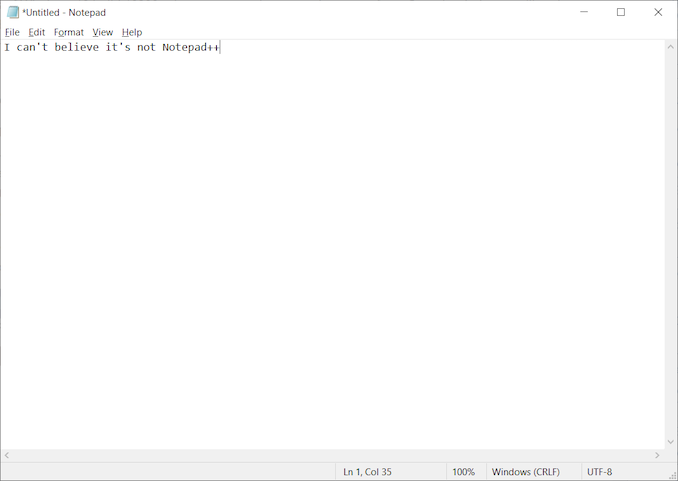

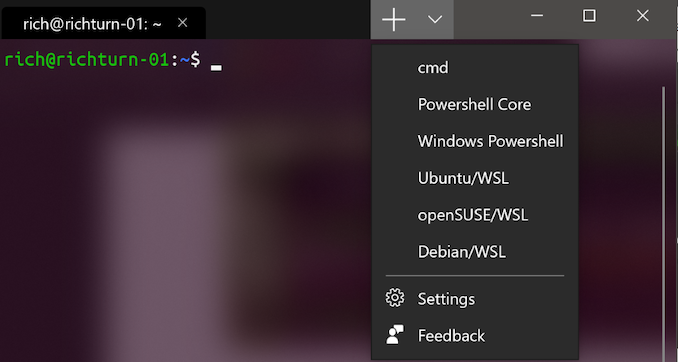

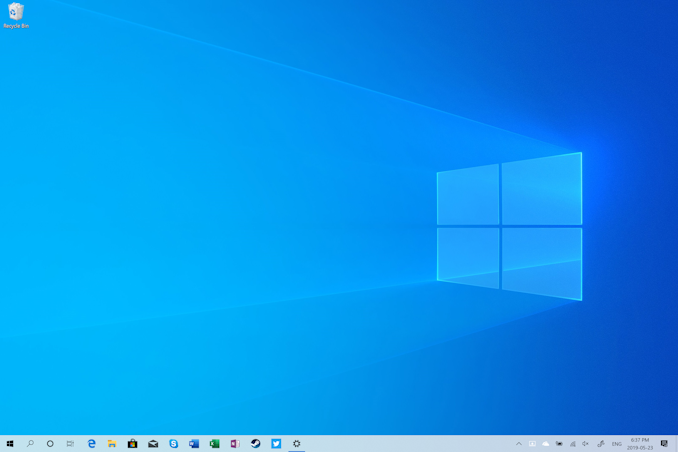
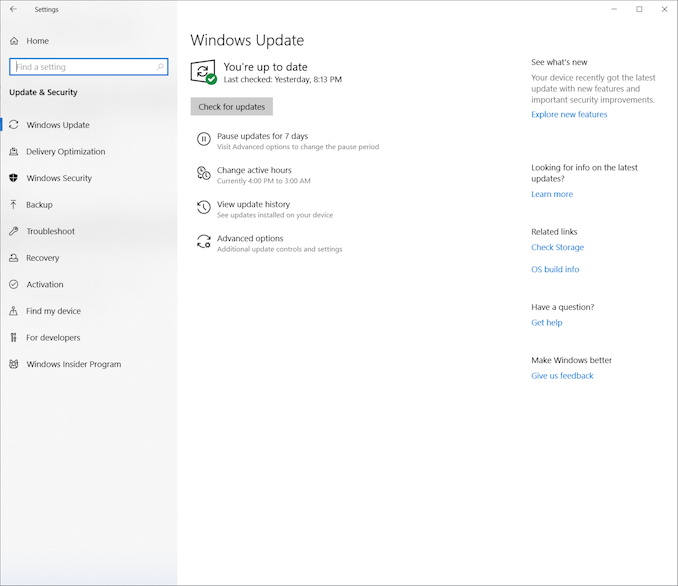














0 Response to "Windows 10 May 2019 Update Feature Focus: Light Themes And Sandboxes - AnandTech"
Post a Comment